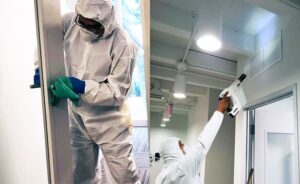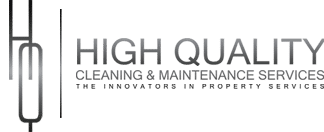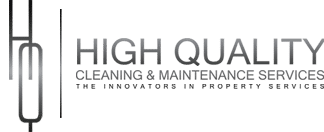How to Clean up after a Flood disaster?

The massive floods in Australia’s northwest have caused enormous damage to the properties and livestock. After floods destroyed roads and bridges, authorities reported that some evacuation centres were unable to accommodate all of the evacuees. Thousands of residences in the Australian states of Victoria, Tasmania, and New South Wales (NSW) have been ordered evacuated due to the risk of flooding caused by rising rivers.
The economic impact of natural calamities like floods may be devastating for company owners. Many business districts, particularly those located near rivers and other water sources, are at risk of flooding.
Dealing with Emergency Flood Damage
Dealing with an emergency flood is an arduous task, and should be best left to experts. We, at High Quality Cleaning and Maintenance Services, will do the following on an emergency basis so as to stop the floodwater from further damaging your home or commercial building.
Carpet Cleaning
After undertaking the cleaning job after flood damage, we first clean the carpet within 12 hours after starting the water extraction process. Failure to abide by these rules might promote the growth of certain germs and fungi that could be harmful to human health. In severe circumstances, air blowers will be used together with our robust equipment and high suction to speed up the drying process. After drying, the carpet will be cleaned if any germs that could have settled within the fibres.
Prevention of mould growth
Those who have had water damage have several worries, one of which is avoiding the growth of mould. A lot of people don’t know the facts concerning mould and water damage. Quick and efficient action is required for water damage mitigation. Water damage mitigation costs are often covered by insurance, and policyholders are typically required to take further measures to guard against secondary losses.
Mitigation of water damage
Repairing property after water damage is a complex process that calls for specific tools and training. High Quality Cleaning and Maintenance Services is one of the many reputable organisations offering restoration services that prevent further damage to the building and its inhabitants.
Water damage is often the root cause of many other issues that may plague a structure, cause costly repairs, and even pose health hazards to the people living there. It is important to hire a skilled repair contractor to oversee the job to ensure the safety of everyone involved and the restoration of damaged property. It is our responsibility to eliminate the source of the germs, stop the mould from spreading, and halt any further harm to the building or its various contents. Moulds may also flourish due to a lack of air circulation inside a building. Mould thrives in dark, moist, and poorly ventilated spaces, so avoid them.
Mould formation may be prevented by drying wet places and belongings within 48 hours. Drying out water damage losses as soon as possible is the most effective strategy to stop mould development.
Moulds and germs may flourish in damp locations that aren’t properly addressed. To prevent damage to your home and health, you must locate and eliminate any sources of moisture.
Water may sometimes be seen dripping down the interior of walls. Sometimes water may wick up a wall if it is left standing. This dampness may not be discovered until mould and musty odours start to cause issues until water stains start to show up. It takes more than just airing out damp carpets to restore a home or a commercial building after water damage.
How do you clean a commercial building after floods have ruined it?
If your company’s office building has been flooded, you may use the following advice from High Quality Cleaning & Maintenance Services to get it back in working order as soon as possible for commercial cleaning services.
In any setting, water damage may be a catastrophe, but the effects of a flood in the workplace can be especially severe and expensive to repair. The time it takes to clean up after a flood at the workplace may cost a company thousands of dollars, so it’s best to leave the drying out and repair to the pros.
But where do you even begin to clean up a business facility after a flood? If you want to salvage as much of your company’s equipment and property as possible while also minimising any structural damage, hiring cleaning services to perform the majority of the task is the way to go.
Since its founding, High Quality Cleaning and Maintenance Services has specialised in assisting companies in resuming normal operations after sustaining damage from natural disasters, including office floods. Here, therefore, is a rundown of everything that has to be done after an office, residence, or commercial building floods:
Steps to Take Following an Office or a Commercial Building Flood
The first step you must take following an office flood is to secure the safety of everyone in the premises.
Heavy furniture and appliances should not be moved by personnel, since doing so may be hazardous. Take instead your personal possessions and any light work-related stuff, such as files and paperwork.
Once this is accomplished, bring in the specialists. The following measures will then be taken to begin commercial building flood cleaning, mitigate water damage, and return your company space to normal.
Take Precaution in Advance
Precautions should be taken right away. During an office flood, it is normal for electrical wiring to get wet and for structural damage to occur. Both of these situations offer serious health risks to employees.
These safety measures are critical to safeguarding your health and might even save your life, regardless of whether specialists have arrived or you’re the only one assessing the first flood damage.
Let some fresh air in
Once any immediate threats have been addressed, water removal from the workplace may proceed.
The initial step will be to use pumps to remove any pools of water, but even after this is done, the workplace will be filled with dampness and damp objects. Some potentially salvageable office or building supplies and items may be dried out by opening the windows.
Methods include employing industrial drying equipment in addition to opening all windows and doors. High-powered industrial fans are only one component of High Quality Cleaning and Maintenance Services specialised drying equipment, which is designed to provide a steady flow of air throughout the facility. This, however, should not be done until the area has been sanitised if the water is sewage water.
Be Cautious About Electricity
It’s important to be careful with electrical devices anytime there’s standing water around or if they’ve been submerged.
Be careful around the various workplace electronics, such as printers, servers, lights, and adapters, which run on electricity. Wetness poses a threat to the safety of any of these commonplace office items.
Because of the high conductivity of water, more care must be taken around electrical equipment wherever water is present. That’s why handing things over to experts is the best option. To ensure that all devices are functional and safe to use, our crew will PAT test them here before bringing them back to the office once they have been dried and cleaned.
Reduce the Fire Hazard
Fires after a flood are not often obvious, but they might break out if the workplace is not cleaned up properly.
Don’t let anybody light anything near the flood site, and make sure the main gas valve is shut off; embers and sparks from leaks and the structural damage might easily spread to the rest of the business. If your system stores or transports flammable substances, we advise having an expert evaluate it for damage.
Discard Unsanitary Materials
After a flood, however, not all of your commercial property will be salvageable. Mould may grow on some objects and release toxins and germs into the air; certain items cannot be recovered and cannot always be sanitised.
The first step in getting things back to normal so you can go back to work is to identify the uncleanable items and toss them away.
Restore Objects That Can Be Saved
Fortunately, there will be recoverable goods in the event of a workplace flood, and we are well-versed in identifying and recovering such objects.
Some of the objects may be salvaged if they are removed from the workplace and washed in hot, soapy water to remove the grime and restore their original condition. Professional cleaning and restoration work may be necessary for a few office items.
Security First
Maintaining a secure work environment is of the utmost importance throughout any job, including cleaning of a flood in the office. You will escape any possible risks that might affect someone who is unprepared by leaving the matter in the hands of the experts.
Professionals will be able to recognise risks and avoid or eliminate them. Additionally, they will have access to protective gear that will shield them from these dangers. This may include items like safety gear, masks and goggles to shield the eyes, ears, and nose, as well as gloves.
Sanitise the building

The office must then be cleaned before it can be ventilated. You may avoid future issues brought on by bacteria or the safety from the covid- 19 that have settled into the workplace space by sanitising the environment and cleaning the office using antibacterial cleaning solutions.
If the area has not been adequately cleaned after being exposed to moisture, mould growth becomes a risk. It’s not only unpleasant to look at; being exposed to it may really be harmful to your health.
Use of professional drying equipment
The workplace or commercial building may be dried out completely with the use of industrial fans and dehumidifiers once it has been disinfected. Strong air movement should be promoted throughout the whole affected area to evaporate any residual moisture, further minimising the likelihood of mould growth and relieving the space of a musty odour.
This must be done immediately after the cleaning process is finished to avoid spreading mould spores and germs even further around the workplace.
Risks to Consider When Cleaning the Space
Hiring experts to clean up after a flood in the workplace is the safest course of action, as well as the finest option for restoring your valuables and continuing operations.
Disease-causing microorganisms and chemical dangers that may irritate the skin and even cause more severe ailments if they enter the body via the eyes, nose, or mouth can thrive in flood waters.
The presence of rats and other animals is another risk that must be taken into account while cleaning up after a flood in the workplace. Some animals choose to make their nests in the crevices and crannies of man-made structures. There’s a good chance that the workplace is now contaminated with their faeces and pee after the water woke them up.
There are other possible dangers that need to be thought about and addressed by experts, such as electrical things, gas appliances, and materials that might contain asbestos. Additionally, infectious infections, chemical risks, and injuries may be brought on by standing floodwaters.
What Is a Flood Plan and What Elements Should It Contain?
Any firm that uses a physical location should have a flood strategy in place. This will enable swift response in the case of a significant volume of water entering the workplace.
Contact information for organisations like insurance providers, flood repair agencies, and utility companies should be included in a flood plan. A list of the things you’ll need if it floods, including essential papers, evacuation packs, and other goods, should also be included.
How High Quality Cleaning and Maintenance Services can be of service – Restoring your peace of mind
High Quality Cleaning & Maintenance Services has helped business owners cope with flooded office or commercial property and have been providing top-notch cleaning services after any natural calamity like floods, earthquakes or fires that cause massive devastation.
You may have faith that High Quality Cleaning & Maintenance Services will restore your business’s office to its former splendour with care and efficiency, thanks to their trained staff and high-quality equipment.
Everyone on our team of devoted professionals has been in the business for many years and has earned relevant certifications and accreditations.
We know how to help your company through the whole process, and we will do all in our power to minimise the harm. Our guiding idea is to alleviate your worries so you can focus on what is really important.
Frequently Asked Questions
1. How do you inspect how much water damage has occurred in my commercial building?
Finding water damage in your commercial building or residence necessitates an inspection by a professional. Ignoring water damage may result in costly structural damage and the formation of mould, which is harmful to the health of the residents.
In order to assess the level of water damage at your commercial building , we will send out one of our seasoned professionals. The damage to commercial buildings will be ranked on a scale from least to most severe.
Class 1: Minor damage
Class 2: The whole building is soaked through to the walls and carpets, spreading the water and its infection.
Class 3:The water has permeated the whole space and been absorbed by the walls..
Class 4:The damage has been done to various items within the property, necessitating special drying techniques.
After assessing the extent of the flooding, we may begin developing a cleaning strategy.
2. Do you steam-clean?
When the drying time is over, we’ll start the steam cleaning procedure. We will give your home and all of your prized possessions a thorough cleaning to eliminate any and all potential breeding grounds for bacteria and other pathogens.
This includes the upholstery, rugs, and curtains.
3. Do you also do mould- remedies?
Professional mould inspection and removal is a speciality of ours, and we have the staff to do it. Our staff will evaluate the situation, formulate a treatment strategy, and then eliminate the mould. As an added precaution, we will install steps to prevent mould from returning.
4. What are the common water damage scenarios?
The common water damage scenarios include:
- Ruptured hoses or pipelines
- Plumbing problems, leaking appliances, and water heaters
- Washing machines, baths, toilets, and sinks that are overflowing
- Storm damage and flooding
- Backups of sewage
- Gutter and drain obstructions and overflow
- Flooded basements
- Roof damage and leaky roofs
5. How soon can you reach us after we contact you?
We give our services in Sydney NSW and the areas surrounding it. Depending on your location, we may be there in as little as an hour.

